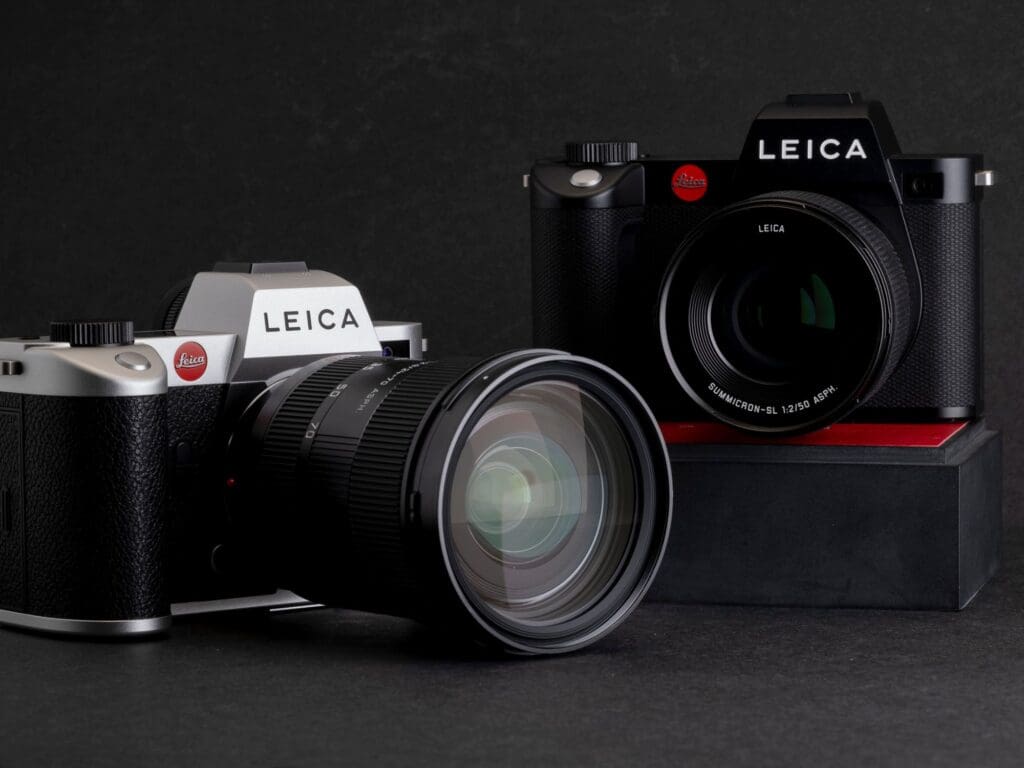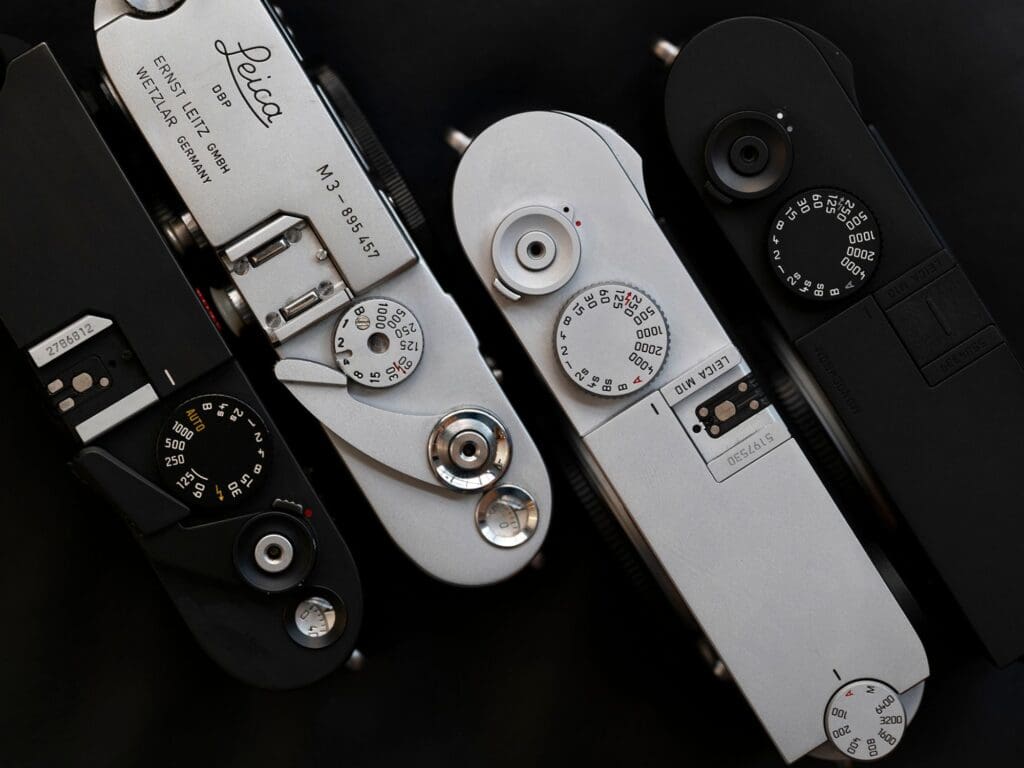“So, what’s the deal with the Leica SL2? Now that the SL3 is out, you must have plenty of them since they’re considered obsolete, right?” We all tend to be captivated by the newest gadget in the room, be it a sleek new car, the latest iPhone, or Rolex’s fresh take on a rehashed theme currently showcased at Watches & Wonders in Geneva. However, you might be like me, someone who appreciates items that become more accessible once that stage has been taken over by the latest and greatest.
A Preface
This article primarily focuses on the business aspect. (I know some of you just yawned) I believe we should discuss and be aware of what we’re consuming and how items are made. When deciding to purchase an item, I consider whether it is long-lasting. Is it well-made? Is it enjoyable to use? If a camera, a watch, a car, a camera bag, or a bike checks these boxes, I know I’m in the right position to spend my hard-earned cash.
Let’s take a brief look at history
The introduction of the Leica Q3 has made the Q2 more appealing, just as the Leica M11 made the M10 cameras more accessible. In fact, the M10-R has become one of our most requested pre-owned cameras of the past year. A few weeks ago, we saw the launch of the Leica SL3. While the new SL3 is impressive, the SL2 is still a great option with plenty of life under the hood. It hasn’t gotten any worse. On the contrary, I would argue that it has improved because the value for money is now much better.
I need to tread carefully to avoid sounding like a used car salesman. However, as I mentioned in my review of the SL3, one of the most exciting aspects of new camera releases is the benefits they bring to the entire system. I anticipated this the day I received our embargo NDA for the SL3 launch, and that might have made me more excited than the SL3 itself.
So, why choose the SL2 then? Let’s draw some comparisons with other brands like Sony, Fujifilm, Canon, and Nikon, as well as exercise some of the mental gymnastics we all do when justifying the purchase of new gear. Typically, when these companies launch a new flagship product, such as the Nikon Z9, there’s a technology trickle-down effect. A few months later, you might see the Nikon Z8, priced at nearly half the cost of the Z9 but with 90% of its features. The Z8 has become one of Nikon’s most successful full-frame cameras because it gives the illusion that it is nearly as powerful as the Z9 at a far more accessible price point.

My Argument: “New isn’t always better… for some of us.”
I believe there are two approaches camera manufacturers can take to use “trickle-down tech.” The aim is to produce newer, improved cameras and engage us photographers and camera gear connoisseurs at various price points:
- This approach is evident in the case of the Nikon Z9 and Z8. The strategy involves producing a flagship camera and then launching a more affordable option later in the year. This caters to different needs and allows for the reuse of many of the same components, technology, and manufacturing processes needed for the flagship model.
- Another arguably better approach is to release a camera only in its highest form and let the previous model serve as the “reduced” or “second tier” model. Using the outgoing model as the “second tier” model has several advantages, which I’ll get into next.
Why do I believe that Leica’s approach of utilizing the outgoing camera model is a better one? Leica attempted the first model with the Leica M 262, which wasn’t necessarily a resounding success at the time of its relevance. Of course, the camera has gained new demand now that it’s two to three generations removed. However, the way Leica has introduced new cameras since the M10, Q2, and now SL2 and SL3 is much more intriguing for two main reasons.
- Using the outgoing model as a “reduced” model helps maintain strong secondary markets. Buying a pre-owned Leica digital camera significantly lowers the cost of ownership. Alternatively, purchasing a new Leica camera and keeping it for many years could still yield decent returns after a decade. For instance, the Leica M 240, which is now over 10 years old, still commands very good prices. It’s quite incredible.
- Utilizing the outgoing model as a “reduced” model is a more efficient use of resources. Fewer cameras lead to a decrease in obsolescence and waste, reducing the number of devices ending up in landfills, parts bins, and junk drawers. We’re at the crossroads of technology and manufacturing, creating products so good that a camera from 10 years ago remains viable. Just imagine the potential of cameras produced now in 10 years. A prime example is the Leica M240 mentioned earlier.

Decades of “Trickle-down tech” by utilizing the outgoing model in one photo. This system isn’t new by any means!
Wrapping It Up
We’ve all been there. The G.A.S. on new gear is unavoidable, all-encompassing, and ever-present in our daily lives as we constantly search for a new camera, lens, tripod, bag, and so on. and so forth. Maybe, just maybe, it’s time for the outgoing model to shine; maybe there should be a spotlight not on the flash new thing on the market but rather on the item it replaced, making it far more accessible to us folks without the need for the latest or even the judgment to lay down their hard-earned cash on such a thing.
I’m not here merely to sell you an SL2 camera, although I relish the opportunity to open the doors to the “underdog,’ if you will, when it comes to the SL2, as I’ve done with the M10-R and Q2. I wouldn’t write such a stupidly long article on a seemingly mundane subject if that were the case. Right now, you have three incredible generations of amazing Leica SL cameras that fit a wide variety of needs and price points, and now you get the Leica SL2 to join those ranks. I still use a Leica M 246 Monochrom, and I drive a 10-year-old car I love. Oh, and if you caught my recent post, I wear a 30-year-old watch. Well-made tools don’t become obsolete the day a new one comes out… they become better.
For those of you who got this far and might be interested in a Leica SL2, maybe you’re an M user looking for an autofocus system or a Q user looking for something with a bit more horsepower and agility or coming from another system altogether. Let’s have a discussion. You can always email me and others who have used and continue to use the SL system via support@camerawest.com or check out the latest Leica SL2 inventory here.
Benjamin Carpenter



